#the Chicano movement
Text

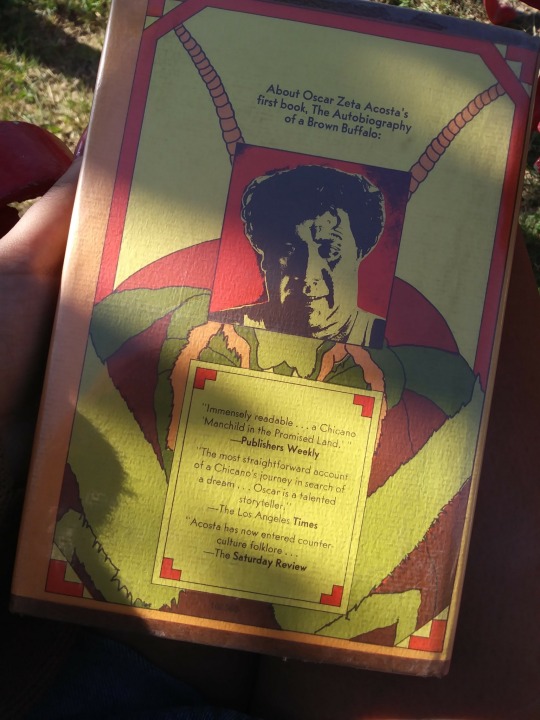
Just one of my few favorite books I have in my collection!
The Revolt of the Cockroach People, by Oscar Zeta Acosta. This book was printed in 1973.
#OscarZetaAcosta#TheRevoltofTheCockroachPeople#book#El Paso#vintage#Original#the Chicano movement#El Movimiento#1973#history
1 note
·
View note
Text
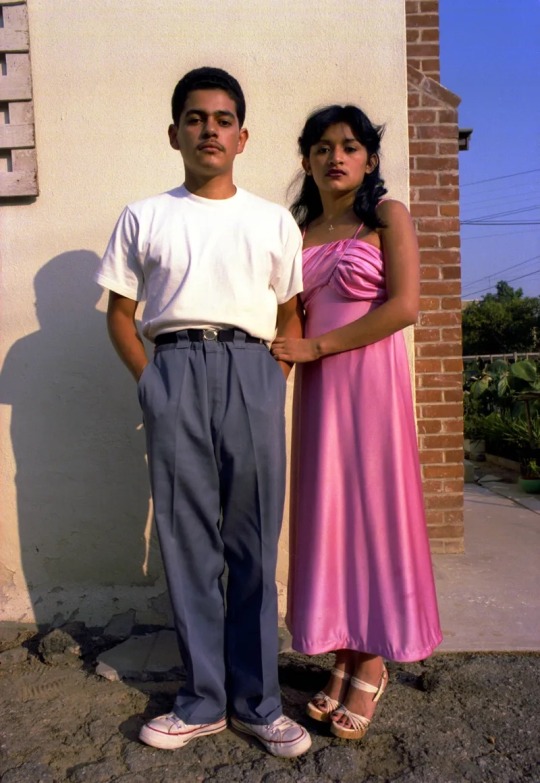
John Valadez, Couple Balam, 1978/80
#🩻#John Valadez#1970s#1980s#los angeles#chicana#chicano#east la#socal#veteranas#brown pride#photography#mexican american#xicana#west coast#history#latin american history#chicano movement#chicano art#arte latinoamericano#arte mexicano
115 notes
·
View notes
Text




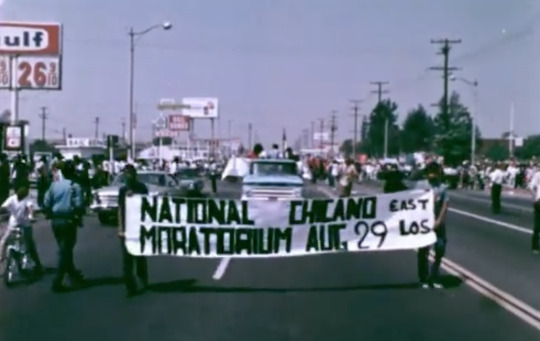







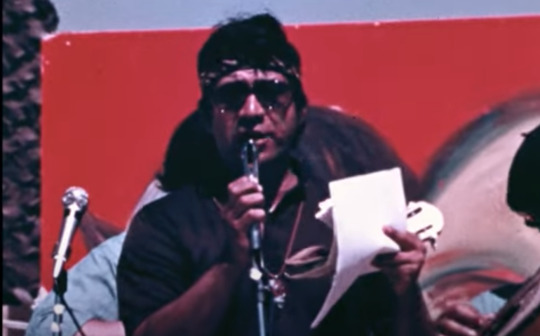



youtube
1970.
The Chicano Power Movement.
11 notes
·
View notes
Text
Mfw someone asks if Cinco de Mayo is Mexico's Independence Day

#GIRL it's not just Drink Tequila and Wear Striped Poncho day#like granted Mexican Americans celebrate it way harder than Mexico outside the city where the event happened#but fun fact it is actually not independence day. thats in september#cinco de mayo is a celebration that every country should have at one point: beating the french in armed combat#the reason we celebrate it in the US is due to a lot of dominos falling contextually#see when news of the Mexican victory came to California the Mexican miners there got super hyped#and celebrated like fucking crazy. and w/ the chicano movement in the early 20th century it became a popular holiday#.sillyshit#.personal
31 notes
·
View notes
Text
Idk what is is with chicano activists and aztlan. Every conversation is just "I miss aztlan you guys used to love aztlan" If you could stop appropreating mexica ancestral beliefs for your ethnostate power fantasies that would be great it makes you look goofy ash.
#I'm not gonna say the chicano movement was useless but it is genuinely so annoying that every organization from that era is still stuck#being named shit like ''the chosen children of aztlan students association''#name one native group from your area I dare you#it drags down progressive action but first of all its corny#let it go!!
3 notes
·
View notes
Text
"The rights and privileges that you hold so dear today were fought for and won by those who came before you. And America fought them tooth and nail every step of the way. Those rights and privileges that you enjoy today, they weren't freely given to people like you and me [speaker is Mexican]. They were fought for by Black, Brown and Native Americans, the people of yesterday. We are where we are today not because of America, but in spite of it. In spite of America's best efforts to see to it otherwise.
Source
Just an example of this:
Chicanos/Mexican Americans fought for their right to equal education when we were given subpar education compared to white students, even when Mexican students studied at the same level or higher than their white peers. Despite many being good students they were still put in 'Mexican' classes which again were subpar and overall poor. Mexican students were geared towards vocational jobs and not encouraged to attend universities. During the school walkouts Mexican Americans and Chicanos fought for equality and for Mexican Anerican studies to be implemented. This gave our people the recognition and chance to see the importance of our culture and history in the U.S.; To empower our people that we are not defined by racist stereotypes and just because we're Mexicans does not mean we are destined to not achieve higher things and goals in life.
#🇲🇽#usa#united states#chicano history#mexican history#history#chicano movement#mexican american studies#chicano studies#mexican#hispanic#latino#latina#school walk
16 notes
·
View notes
Text
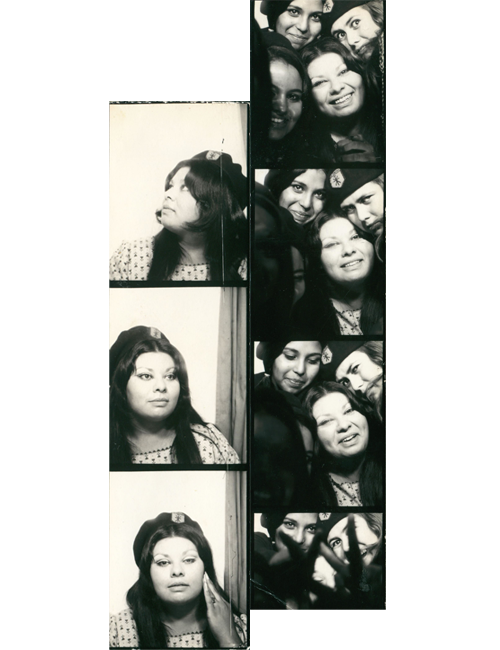
Gloria Arellanes, at left, and at center, with fellow Brown Beret members including, from clockwise: Lorraine Escalante, Hilda Reyes and Arlene Sánchez.
22 notes
·
View notes
Text
When Special Interests Collide: 9-1-1 & Linguistics Edition
Peruvian and Mexican Spanish are unique dialects - heavily influenced by local indigenous languages - where several words don't even sound similar to each other. An "accent" isn't going to be what trips Eddie and Buck up when talking to each other, it's going to be slang and regional differences.
Think soda vs pop vs sodapop vs soft drink vs coke or coca-cola vs lemonade vs Sprite vs other brand names for lemon-lime soda. All equally correct ways to refer to the same thing, varying only by dialectical context and specificity. (In some parts of the South, all soda is coke or coca-cola. In some parts of the world as a whole, all lemon-lime soda is called lemonade while lemonade itself is lemon juice. In my part of the world, all lemon-lime soda is Sprite.)
Some dialects are more common - almost everyone in North America who learns Spanish in school learns Northeastern Mexican Spanish with Texan influence and almost everyone in Europe who learns Spanish the same way learns Castilian Spanish.
(Eddie may have learned any of the 10 dialects of Spanish local to Mexico from his family or even a Texican variant from before the border changed. He may also be fluent in Spanglish, which is a structured code-switching system between Spanish and English, with some creole words thrown in where appropriate to its own internal rules.)
Andean-Coastal Spanish is the most common form spoken in Peru out of five recognized dialects, and it's extremely common in Ecuador as well but almost unheard of in the United States and Canada.
It's not just "saying words funny" or "sounding like the white boy he is". It's far more like a Scots English speaker talking to a Bostonian. Which I'm aware sounds exactly like "saying words funny" to the uneducated, but that's why I'm making this post. <3
An accent is how the oral posture (the way the parts of your mouth move) of your native language affects how you say words in a learned language. It can also be how the posture of your native signed language affects how you form signs in others, or how the alphabet of your native language affects how you write characters and symbols in another alphabet.
You can have a strong accent, but not a bad accent.
A dialect is a variation of a language, with its own grammar, syntax, and vocabulary similar but distinct from other dialects of the same language. Or, in rare cases, grammar or vocabulary completely different from other dialects! Most dialects of the same language are mutually intelligible, meaning you can understand what the person means even if not what they say.
You can speak a different dialect or mimic a dialect badly, but you cannot speak a wrong dialect.
A language is a system of communication with distinct, nuanced rules governing how - and sometimes in which situations - it is used. Most languages are mutually unintelligible, meaning the speaker of one cannot understand the other at all. If two languages are from the same language family, they may be partially intelligible instead, meaning you can get the gist or pick up keywords, but you cannot understand completely.
In addition to speaking a different language, you can speak a wrong language or speak a language badly, depending on the context.
TL;DR: Peruvian and Mexican Spanish are dialects of the same language, with similar but different rules and vocabulary, which Buck would speak with an American accent. As a bilingual person, if Eddie learned Peruvian Spanish, he would likely speak it with an American accent on some words and a Mexican Spanish accent on others. If Buck was speaking Peruvian Spanish correctly and Eddie was speaking Mexican Spanish, they would mostly understand each other, but not completely, and their accents would not affect that.
#/incoherent noises/#911 tv show#911 eddie#911 buck#911 buddie#languages and linguistics#spanish dialects#dialect differences#tune in next time when i talk about the effects of the chicano movement on a mexican army man whose father lived through it#or not i mean it really depends on my goddamn energy#long post#tldr included
8 notes
·
View notes
Text
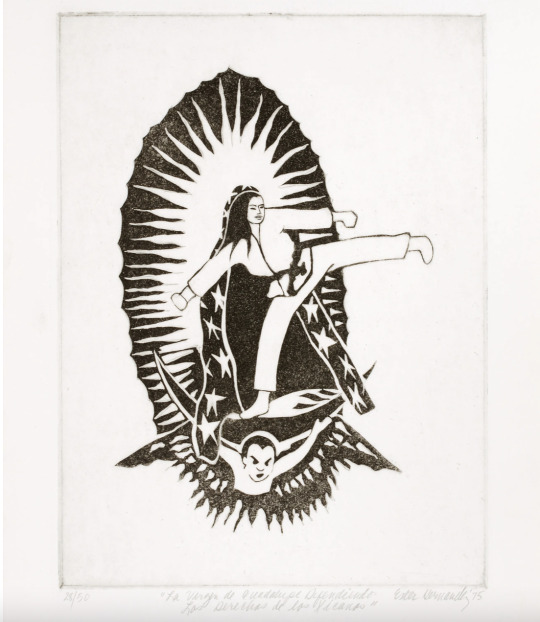
Ester Hernandez, La Virgen de Guadalupe Defendiendo los Derechos de los Xicanos, 1975, Smithsonian American Art Museum, Museum purchase through the Frank K. Ribelin Endowment, 2013.56, © 1975, Ester Hernández
https://americanart.si.edu/artwork/la-virgen-de-guadalupe-defendiendo-los-derechos-de-los-xicanos-86123
Ester Hernandez was the first prominent Chicana artist to implement the imagery of La Virgen de Guadalupe as a form of political symbolism questioning the marginalization of women in Chicano women.
3 notes
·
View notes
Text

Ester Hernández (American, b. 1944) • La Ofrenda, from the National Chicano Screenprint Taller, 1988-1989 • 1988 • Graphic Arts-Print: screenprint on paper • Smithsonian American Art Museum
Ester Hernández is an artist of the first generation of Chicano and Chicana artists who participated in the Chicano art movement that began in the late 1960s as part of the Chicano civil rights movement.
#art#graphic art#ester hernández#screenprinting#women in paintings#chicana artist#bay area chicano art movement#activist art
2 notes
·
View notes
Text
every now and then i will have a thought about the 70s and then spontaneously combust into a thousand fla[gets dragged away by security]
#chicano was originally a slur towards mexican americans but was reclaimed during the 60s-70s during the california strikes#back then students were also mostly just taught about white history (or black if they were lucky) but never their own#so protests and calls to learn their own history was made which also resulted in heavy pride within themselves#you'll also see a lot of indigenous pride when it comes to the chicano movement back in the day#especially if you look at the murals which have a lot of inspiration derived from mexican catholicism and indigenous imagery#(which is a little ironic to me considering mexico doesn't exactly treat their indigenous population well but i digress 🫠🫠)#then we also have chicano park which is also one of the biggest icons of chicano history#it was built back in the 60s but split up a neighorhood-- the government promised to build a park to compensate but eventually the folks li#-ing there found out they were going to turn it into a patrol station instead and protested in 1970#eventually chicano park was built and after it opened a shit ton of murals came up because at the time there was the chicano mural movement#and a muralist proposed letting others paint on the walls since a lot of the structures built happened to be pretty good canvases#this is all kinda basic history and you could easily look most of this up lmao#i just like rambling#anyways thats my time folks security is eyeing me like they're about to ban me okay b[Electric Taser SFX]#pyro screams to the abyss
1 note
·
View note
Text
youtube
0 notes
Text
vimeo
0 notes
Text
Chicano Cultural Heritage Month
Chicano Cultural Heritage Month
By Luis Peña
On June 23rd, 2022 Mayor Vigil will proclaim August as Chicano Cultural Heritage Month (CCHM) for the City of Española, NM. The goal of CCHM is to “celebrate, educate and elevate” Chicanx culture in the City of Española. The first celebration of CCHM will occur on August 29th, 2022, on the 52nd anniversary of the Chicano Moratorium of East Los Angeles in protest of the Vietnam War.…

View On WordPress
0 notes
Text
honestly i dont even know if i feel right using latino
like knowing it was made up by Napoleon iii to intervene in latin american affairs ... ew
0 notes
Text
How to tell if the movement you think is possible to revitalize is Actually Past Saving:
#yes this is about chicanismo#kind of frustrated with the current trend of liberals using legitimate issues within the movement to do away with it's leftover structure#on the one hand there's so many problems that people who identify as chicano perpetuate so it's hard to tell how redeemable the legacy is#on the other hand if you use critique of indigenous erasure as a front to condemn any form of radicalism I'm gonna bite you#especially if you think it should be replaced with Empowerment Diversity Inclusivity Validity organizations that prop up the status quo eve#more#hard argument to enter into not knowing if or how chicanismo is gonna be able to adapt to be something worth supporting#chicanismo#yeah this is about the MeCha thing#like do I approve of the name change? yeah I wish they did it years ago#but what does empowering against struggle mean in terms of action 🤔#and how much action will be going on if you discard every radical thought along with everything else#what problems does that association cause for current members wondering how theyre gonna be represented#who are we letting decide what chicano means#etc etc#chicano
1 note
·
View note